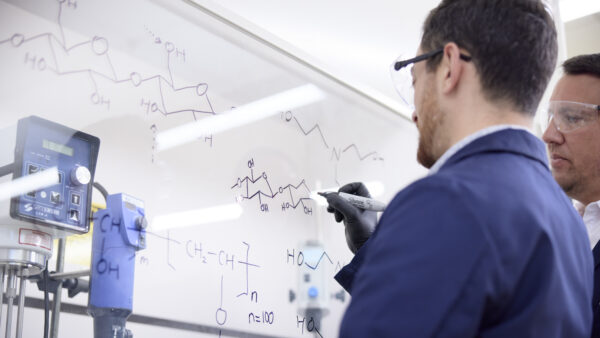It takes more than good genetics to maximize the value of today’s seed varieties
Breeders spend years and millions of dollars researching new seed varieties. Each genetic advancement holds opportunity — one that farmers and seed companies fight to protect.
What’s the first line of defense to protect seed from insects, fungi and nematodes? Seed treatment, and every component in that treatment plays a critical role – including the colorants, polymers and coatings.
For example, the Agrocer® line of colors, polymers and seed coating technology by Clariant, undergoes rigorous testing to help deliver the seed’s inherent yield potential. Before Agrocer seed technologies reach the treater, they’ve been tested hundreds of times for up to three years.
“The degree we evaluate products for safety and performance is a differentiator for us – we pay strict attention to how our products interact with seed treatment blends and if there is any interaction with the crop,” says John Kibbee, vice president of technology for Standard Colors, North American partner with Clariant.
Protect Seed Performance
Testing is the cornerstone of the seed industry – it provides promise to farmers, peace of mind for companies and valuable information that can be used in sales and product positioning. Seed treatment is no different.
“Probably the biggest thing we focus on in the seed world is the principle that having no negative impact on germination,” says Kevin Brost, Standard Colors vice president of marketing and business development. “It is the single most important aspect of anything added to the seed.”
Just like seed manufacturers test for germination, the group performs standard and cold germination tests. The goal? To ensure there is no drop in germination or vigor from using Agrocer products, so the crops emerge healthy and strong.
“We also do long-term storage testing based on the crop,” Kibbee says. “This test can take up to 24-months.”
For seed treated and stored, this helps ensure no negative impact during storage. Not only will the color stay vibrant, but the seed’s performance metrics also stay unchanged.
“Applying seed treatment is only the start,” Brost says. “It has to say stay with the seed, in proper dosage and coverage throughout the journey from production facility to field. Today’s use of color and coatings also provides a brand identity to the seed variety and its treatments, adding and showing visible value for easy identification, avoiding errors and giving growers confidence in their purchase.”
The team takes a wide variety of factors into consideration when testing for overall field and treating performance, including:
- Flow – confirms the seed treatment blend will not get caught up in seed treaters.
- Bridging – ensures formula is right to avoid clumping and bridging.
- Retention – a test to make sure fungicides, insecticides and biologicals stay adhered to the seed.
- Plantability – proves the treated seed in the planter achieves accurate rates, placement and depth.
With today’s high-yield expectations, it’s important to note that more than just genetics go into producing a crop. Seed technology is only expanding and seed treatment – down to every last active and inert ingredient – plays a big role.
“Ultimately, our goal is that every customer, from multi-national seed companies, to farmers who treat seed on their own farms, have the same great experience,” says Mark Self, Clariant market segment manager-special applications. “From color to seed flow, we’re doing all we can to ensure everything works together to help the farmer.”
It takes extra time and money, but testing is a critical part of Standard Colors’ and Clariant’s commitment to ensuring the highest quality and consistency across products and crops.
To learn more, visit www.clariant.com/agrocer or contact Kevin Brost at 406-204-4404 or kevin.brost@standardcolors.com
For more information, go to www.clariant.com/agrocer











